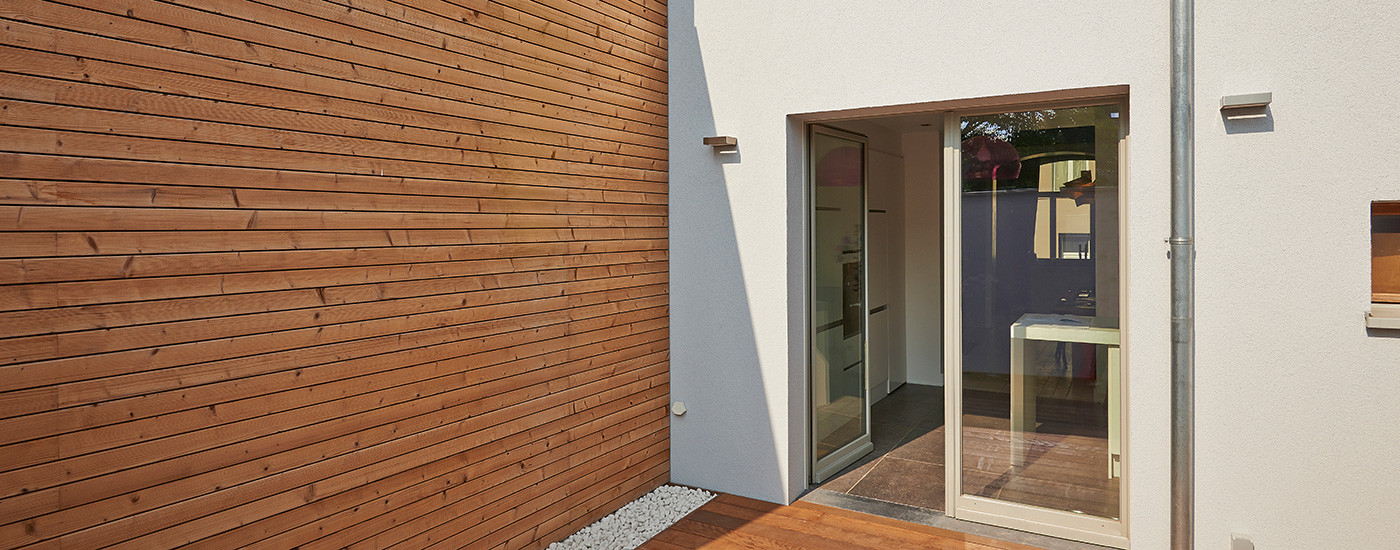Timber cladding, popular in the production of garden sheds, is becoming increasingly sought after as a way to add an aesthetic dimension to the exterior of homes and offices. In the current economic climate with people facing the challenges of the rising cost of living, cladding will also help to insulate a building, protecting it from the elements and making it more energy efficient.
Timber cladding profiles
There are several profiles of timber cladding in the UK, with the most popular being loglap cladding, tongue & groove cladding, and shiplap cladding. Our article How to choose the perfect wooden garden cladding will help you to choose the best profile for your project.
Once you have chosen the profile of your cladding boards, you will need to decide whether to use nails or screws to install them and which way you are going to position them.
Should cladding be horizontal or vertical?
The orientation of cladding boards refers to the direction of the boards when installed. Cladding can be installed horizontally, vertically or even diagonally, and which you choose will depend largely on personal preference.
Horizontal cladding
This is the most common orientation for exterior timber cladding and as a result, is the preferred choice for architects and designers wanting to achieve a more traditional aesthetic. Simpler to install than vertical cladding, horizontal cladding is popular with DIY enthusiasts and anyone looking to renovate the exterior of a property.
As exterior timber cladding in the UK has to withstand all types of weather conditions, it is important to choose the correct profile of boards. For horizontal cladding, a shiplap profile has a longer lip on one edge of the board which, when correctly installed, will allow rainwater to run off easily.
Vertical cladding
Vertical cladding will give the illusion of height to single storey buildings and can also add a rustic dimension to properties, having been traditionally used on log cabins and barns in the past.
Ideal for smaller projects, a vertical orientation is also suitable for cladding sections of a home to create a visual break in the exterior design. Slightly more challenging to install than horizontal cladding, boards with a horizontal orientation are easier to clean and therefore maintain.
Vertical cladding is still considered to be ‘out there’ by many people, so when future re-sale is a consideration, it may be ‘safer’ to stick with horizontal boards!
Diagonal cladding
For a really eye-catching aesthetic, consider a combination of vertical and horizontal boards, or even a diagonal orientation. Using traditional timber cladding boards in this quite untraditional way can create enormous visual impact as well as a retro feel reminiscent of the finish given to homes in the ‘50s and ‘60s. Diagonal cladding brings its own challenges, not least because boards need to be precision cut at a 45° angle and so should only be undertaken by a professional or someone with experience.
Timber cladding from Witham Timber
With over 40 years’ experience in the provision of quality timber products to the building industry, we pride ourselves on the quality of our cladding products. Sourced from certified and sustainable forests, our range of products is ideal for outdoor projects and includes cladding boards, timber framing and timber fixings. All our cladding products are pressure treated for durability and are covered by a Chain of Custody Certificate which gives our customers added confidence by tracking materials throughout the entire supply chain.
For more information about any of our timber cladding products, our experienced and friendly staff is available on 01205 359188 or by email at sales@withamtimber.co.uk

